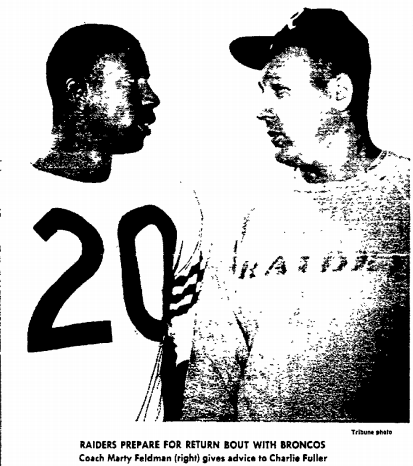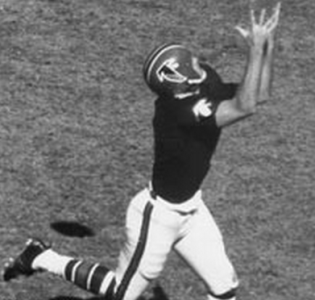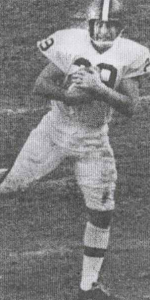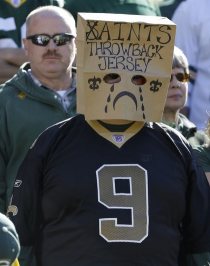Now that was fast. Seems like just yesterday Robert Griffin III was the Future of the Franchise and one of the best young quarterbacks the NFL has seen. Now a segment of the population — commentators included — are wondering whether his eye-popping rookie season was a mirage, whether he’s merely another overhyped, self-absorbed player who, in a true meritocracy, wouldn’t even be the Redskins’ starter.
The Shawshank Redemption is full of great voiceovers, and one of my favorites is when Red (Morgan Freeman) is talking about Andy’s escape from prison. Near the end, he says, “Andy did like he was told, buffed those shoes [of the warden’s] to a high mirror shine. The guards simply didn’t notice [him walking back to his cell in them]. Neither did I. I mean, seriously, how often do you really look at a man’s shoes?”
I found myself thinking of that line earlier this week when Washington Post columnist Jason Reid started ripping Griffin’s shoes — and his socks, too. On the opening day of training camp, RG3 “separated himself from everyone else on the field,” Reid wrote,
by wearing a black sock and a black cleat and a white sock and a white cleat. Griffin explained it was something he has done since college to represent the “yin and the yang. White and black working together. We’re all brothers. We’re doing it together” Okay. Whatever.
But Griffin’s ineffectiveness and feud with the Shanahans led to the relationship being detonated. How could Griffin think it would be a good idea to stand out from his teammates on a day that marked a new beginning for the group? And Griffin’s insistence on clinging to his college days is tripping him up in the pros.
Reid is obviously willing to go the extra mile, to “really look at a man’s shoes” (not to mention his socks). In fact, if the Redskins lay another dinosaur egg this year, and Griffin has anything to do with it, I fully expect a three-part Post series on “The shoes (and socks) that sank a season.” Or maybe it’ll just be two parts — one for the shoes and one for the socks.
I ask you: As well known as RG3 is — Heisman Trophy winner, NFL offensive rookie of the year, endorsements up the wazoo, more jersey sales in a season than any player in league history — do you really think he was trying to attract more attention to himself and stand apart from his teammates? Something tells me he’s already got the Attention Thing covered.
But moving along . . . we all know how good Griffin’s first season was. Here’s the list of rookie quarterbacks, in the first 94 years of the league, who’ve had 3,000 passing yards, completed 65 percent, thrown for 20 TDs and had a 100 rating:
Robert Griffin III, Redskins, 2012 (3,200, 65.6, 20, 102.4)
That’s it. And remember, he missed a game — against a lousy Browns club. His stats could have been better.
But never mind that. Exactly how bad was he last season, in terms of where he is in his career? Well, for a 23-year-old, he actually played pretty well. My research turned up just five QBs who, at that age, equaled or exceeded RG3’s numbers in the aforementioned four categories (3,203 yards, 60.1 percent completions, 16 TDs, 82.2 rating):
[table]
Year,Quarterback\, Team,Yards,Pct,TD,Rating,W-L
2011,Matthew Stafford\, Lions,5\,038,63.5,41,97.2,10-6*
2008,Matt Ryan\, Falcons,3\,440,61.1,16,87.7,11-5*
2000,Daunte Culpepper\, Vikings,3\,937,62.7,33,98.0,11-5*
1999,Peyton Manning\, Colts,4\,135,62.1,26,90.7,13-3*
1984,Dan Marino\, Dolphins,5\,084,64.2,48,108.9,14-2*
[/table]
*made playoffs
Granted, Griffin’s stats put him at the low end of this group, but it’s interesting how every other quarterback made the playoffs — and won at least seven more games than RG3 (3-10) did. Do you suppose some of it might have been because the Redskins defense was a few bricks shy of the Great Wall of China?
Oh, and none of these QBs was coming off a blown-out knee — in January — that turned his offseason into one long rehab session and kept him from taking a single snap in an exhibition game.
We seem to have reached the stage where we think of football players as cartoon characters. They run through a screen door, break into 1,000 pieces, and in the next frame they’re supposed up and running again.
It’s not easy to come back from an ACL/LCL injury as quickly as Griffin did, even with all the advancements in sports medicine. Example: Tom Brady tore up his knee in the Patriots’ 2008 opener and missed the entire season. Even though he had four more months to heal than RG3 did, he clearly wasn’t himself when he returned to the lineup in ’09. Indeed, his rating dropped 21 points, from 117.2 (in ’07) to (96.2). How many points did Robert’s rating drop last year? 20.2.
You’ll be pleased to know, though — well, those of you who don’t belong to the Kirk Cousins Fan Club — that Brady’s rating shot back up to a league-leading 111 the next season. Also, let’s not forget: Tom was a 10th-year player in ’09, not a second-year guy like Griffin was last season. The offense he was stepping back into was as comfortable as an old pair of cleats (both black). RG3, on the other hand, was trying to morph into a more conventional pocket passer a year ago – for self-preservation’s sake. In many ways, it was a whole new world for him.
Reid chided him for demanding “changes in the offense he was not ready to execute.” Yeah, but part of that was because he was too busy picking up the 1,000 pieces he’d broken into to spend the necessary time on the practice field. Beyond that, though, if Griffin didn’t insist on changes, who would have? Mike Shanahan had already shown his willingness to leave RG3 in the game, hobbling around as if he had a peg leg, until his knee finally gave out. (And then Shanny makes a grandstand play and sits Robert for the final three games of last season — for His Own Good. Sorry, Mike, but your humanity is 11 months late.)
What tends to be overlooked about young quarterbacks these days is how incredibly exposed they are. They play sooner — and younger — than ever before because (a.) they’re allowed to turn pro earlier, and (b.) the college game prepares them better. Some of these kids shouldn’t be wearing helmets, they should be wearing incubators.
They’re exposed, too, because they become such a part of their team’s (and the NFL’s) marketing plan. They’re just Out There, in public, all the time. And mobile QBs like Griffin are further exposed because they’re counted on to run the ball . . . and to take the hard knocks that go with it.
Yet some expect them to act with the maturity of a veteran, the equilibrium of the Dalai Lama and selflessness of Mother Teresa. Good luck with that. To paraphrase Forrest Gump’s mom, “Twenty-three is as 23 does.”
If you go by passer rating, RG3 is one of the Top 5 under-25 quarterbacks of all time. (And as you’re looking at the following list, keep in mind: He has another season to add to his totals. He doesn’t turn 25 until February.)
[table]
Years,Quarterback\, Team,Att,Comp,Pct,Yds,TD,Int,Rating
2012-13,Russell Wilson\, Seahawks,668,428,64.1,5\,480,45,16,102.1
2012-13,Nick Foles\, Eagles,582,364,62.5,4\,590,33,7,101.0
1983-86,Dan Marino\, Dolphins,1\,492,911,61.1,11\,975,102,45,96.6
1999-01,Daunte Culpepper\, Vikings,840,532,63.3,6\,549,47,29,91.6
2012-13,Robert Griffin III\, Redskins,849,532,62.7,6\,403,36,17,91.5
[/table]
(Minimum: 500 attempts.)
Griffin is also the No. 3 under-25 QB for rushing yards. (And again, he has another season to add to his total.)
[table width=“400px”]
Years,Quarterback\, Team,Yards
2001-04,Michael Vick\, Falcons,2\,223
2011-13,Cam Newton\, Panthers,2\,032
2012-13,Robert Griffin III\, Redskins,1\,304
1985-87,Randall Cunningham\, Eagles,1\,250
1999-01,Donovan McNabb\, Eagles,1\,201
[/table]
Griffin’s productivity — for his age — ranks way up there. Really, how much more can he do? So his detractors tend to focus on other stuff (e.g. his relationships with teammates, his handling of social media, his alleged family-sized ego and, yes, even his shoes and socks).
Reid went as far as to suggest that RG3 seek out Doug Williams, now a personnel executive with the Redskins, for counsel. “A good mentor,” he wrote, “could teach Griffin much of what he lacks. Luckily for Griffin, the ideal person for the job works in the same office.”
Hoo boy. There wasn’t social media in Williams’ day, but maybe you recall the classy way he handled his divorce in 1989. These are the first few paragraphs of a story he fed the Post’s Tom Friend:
While Redskins quarterback Doug Williams was flattening his NFL opponents the past two seasons, his wife, Lisa, was delivering “the worst sack I ever had in my life,” Williams says. Their next date is Friday in court, where her lawyer says she’ll give her side of the story.
Williams says Lisa Robinson was after his money, fooled him into matrimony, and later let herself get pregnant against his wishes. “She knew I didn’t want a baby,” he says.
The Washington Redskins quarterback couldn’t have been a more eligible bachelor when they were wedded in June 1987, but he says he is convinced now that she masked her personality to win him, later ignored his 6-year-old daughter, Ashley (from his previous marriage), and then robbed him last month while he was working at Redskin Park. . . .
Williams later recanted all this. In court, he testified he’d had affairs with other women during the marriage, and in a statement he said, “Very often during emotionally difficult situations such as I have recently experienced, occasionally improper things are said and done. . . . Any allegations concerning my wife since we separated were said in anger, and to her, her family and friends, I apologize.”
After the split, the Post assigned a Style section writer to get the wife’s version of events (and basically clean up the mess). Near the top of Donna Britt’s piece were these words: “[W]ith her T-shirt, makeup-free face and curly nest of auburn hair, Robinson, 26, looks like a TV-commercial prototype for a young mother busy with bottles, bibs and keeping inedible objects from her baby’s mouth. She does not remotely resemble a heartless gold digger — the ‘con artist’ and ‘thrill-seeker’ who gave Williams ‘the worst sack I ever had in my life’ as he told The Washington Post six weeks ago.”
And Doug back then was, what, a callow youth of . . . almost 34?
Then there was the scene, a couple of years before, when Williams “broke down crying in an interview” after being told Jay Schroeder was being restored as the starting quarterback. Reid has already made it clear he finds Griffin a little too Joe College, a little immature. We can only imagine how he would have reacted if Robert had teared up when Shanahan benched him in favor of Cousins.
At any rate, there are probably better mentors for Griffin than Williams. One might be former teammate London Fletcher, the new CBS analyst, who, during a radio appearance on the Junkies, refuted the notion the QB wasn’t popular in the locker room.
“Robert is probably the most-liked player on the team, or one of the most well-liked players on the team, when I was there, because he’s engaging,” Fletcher said. “He’s charismatic. . . . He was humble. . . . He’s handled himself like that the two years I was there with him, and I’m sure he continues to handle himself that way.”
The NFL is all about survival — for any player — but it was especially so for Fletcher, a 5-foot-10 (maybe), 245-pound (maybe) linebacker. Griffin is getting a crash course in that right now, a tutorial in Weathering the Storm. He’s far from a finished product — at 24, how could he be? — and he has a new coach, Jay Gruden, and a new offense to learn. But the early returns are promising. That is, if you’re not the kind who reads a lot of symbolism into shoes and socks.




